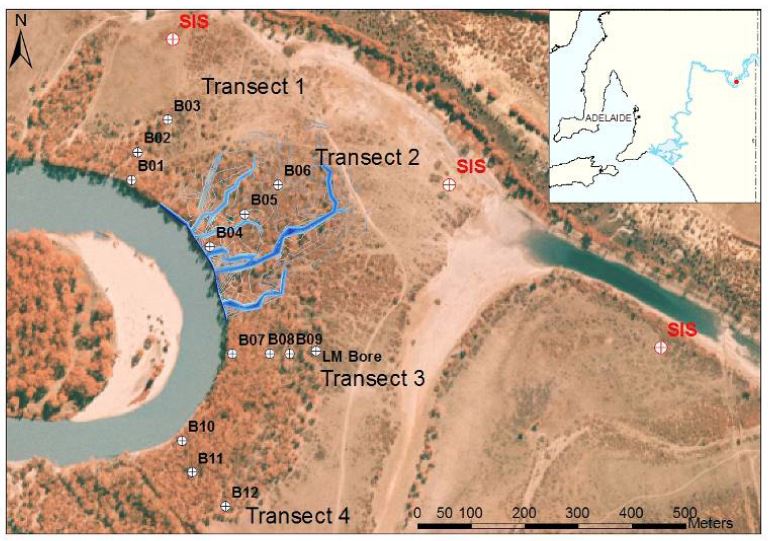Properties
The sandy topsoil at Bookpurnong is mostly saturated by water from the river, irrigation, and other source of recharge. The ground conductivity is therefore dominated by the salinity of groundwater. High salinity in water means more ions acting as free charge carriers, so high electrical conductivity is expected at the place suffering from high salinization (see more information under Physical Properties: Electrical Conductivity). At Bookpurnong, the fresh water is from the river and irrigation, and the saline water is from the natural acquifer under the highland. Therefore, the conductivity can be a direct indicator of the source of groundwater, from the river or the intrusion.
At Bookpurnong, hydrogeologists have sampled and measured the electrical conductivity of the groundwater along several transects across the river floodplain Fig. 347 [HJMcEwan1+08]. The measured conductivity from several wells along Transect 3 is plotted as cross sections from the river bed to the bank both before and after SIS Fig. 348.

Fig. 347 Locations of the drills where groundwater samples were taken for the salinity measurement [HJMcEwan1+08].

Fig. 348 Groundwater salinity measured by electric conductivity [HJMcEwan1+08].
Those field physical property measurements confirmed that the water conductivity at Bookpurnong is at the order of 1 S/m. The actual conductivity of the ground may be lower if taking into account the porosity, but it is still much higher than the usual earth media. Also, the overall conductivity is higher towards the bank than in the flush zone; and higher near the surface than at depth.